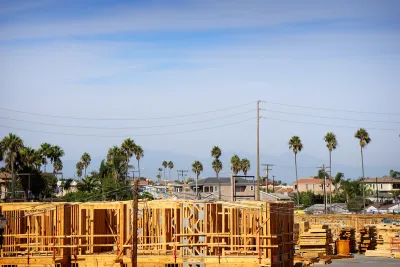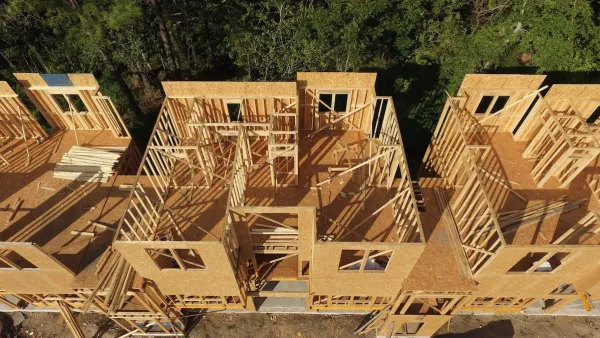Housing advocates worry that, without government guardrails, buildings may not remain affordable or well-maintained in the long term.

“Across California, efforts to address the homelessness crisis by building more affordable housing with government money have been plagued by sky-high costs,” reveals an article by Christine Mai-Duc and Will Parkers in The Wall Street Journal, prompting some developers to forgo government subsidies to bring down construction costs for affordable housing.
“Some affordable-housing veterans worry whether privately funded construction can scale quickly enough to match the scope of the homelessness problem and whether its backers will maintain their commitments to serve the needy.” But developers argue sticking with private financing cuts millions in ‘soft costs’ and makes affordable housing production faster. “Advocates have also questioned how many buildings reliant on renters with housing vouchers can be sustained unless the federal government greatly increases funding for them.”
In California, recent legislation is making it easier for privately financed affordable housing developments to move forward. As the article points out, “Though construction doesn’t use public financing, many privately funded buildings would likely still depend on government funds to operate. Formerly homeless residents at SDS-financed properties, for example, are expected to use federal housing vouchers or other rental assistance to pay rent. The properties can also qualify for property-tax exemptions.”
FULL STORY: Why Private Developers Are Rejecting Government Money for Affordable Housing

National Parks Layoffs Will Cause Communities to Lose Billions
Thousands of essential park workers were laid off this week, just before the busy spring break season.

Retro-silient?: America’s First “Eco-burb,” The Woodlands Turns 50
A master-planned community north of Houston offers lessons on green infrastructure and resilient design, but falls short of its founder’s lofty affordability and walkability goals.

Delivering for America Plan Will Downgrade Mail Service in at Least 49.5 Percent of Zip Codes
Republican and Democrat lawmakers criticize the plan for its disproportionate negative impact on rural communities.

Test News Post 1
This is a summary

Test News Headline 46
Test for the image on the front page.

Balancing Bombs and Butterflies: How the National Guard Protects a Rare Species
The National Guard at Fort Indiantown Gap uses GIS technology and land management strategies to balance military training with conservation efforts, ensuring the survival of the rare eastern regal fritillary butterfly.
Urban Design for Planners 1: Software Tools
This six-course series explores essential urban design concepts using open source software and equips planners with the tools they need to participate fully in the urban design process.
Planning for Universal Design
Learn the tools for implementing Universal Design in planning regulations.
EMC Planning Group, Inc.
Planetizen
Planetizen
Mpact (formerly Rail~Volution)
Great Falls Development Authority, Inc.
HUDs Office of Policy Development and Research
NYU Wagner Graduate School of Public Service





























